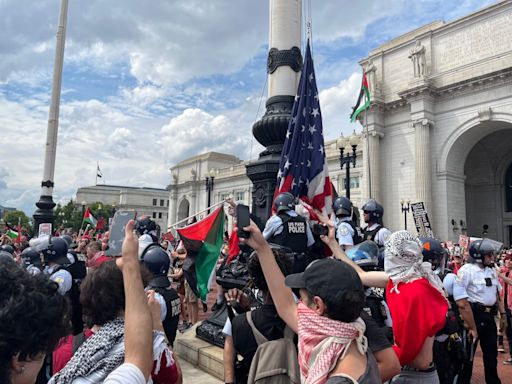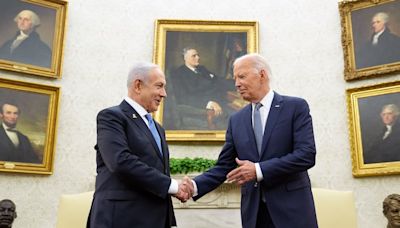Search results
3 days ago · Shri Narendra Modi was sworn-in as India’s Prime Minister for the third time on 9th June 2024, following another decisive victory in the 2024 Parliamentary elections. This victory marked the third consecutive term for Shri Modi, further solidifying his leadership.
- Interact With Pm
Content managed by Prime Minister's Office . Website...
- List of Officers (Pmo)
List of Officers (Pmo) - Prime Minister of India
- Pm's Visits
Pm's Visits - Prime Minister of India
- Mann Ki Baat
Mann Ki Baat - Prime Minister of India
- Pm's Funds
In pursuance of an appeal by the then Prime Minister,...
- News Updates
The Prime Minister, Shri Narendra Modi has paid tributes to...
- Videos
PM inspects the exhibition at 4th Session of World Heritage...
- National Defence Fund
The Fund is administered by an Executive Committee, with PM...
- Interact With Pm
Since 1947, India has had 14 prime ministers. [a] Jawaharlal Nehru was India's first prime minister, serving as prime minister of the Dominion of India from 15 August 1947 until 26 January 1950, and thereafter of the Republic of India until his death in May 1964.
The prime minister is appointed by the president of India; however, the prime minister has to enjoy the confidence of the majority of Lok Sabha members, who are directly elected every five years, lest the prime minister shall resign.
- Etymology
- History
- Overview of The Office
- Cross-Country Comparative Details
- Lists of Prime Ministers
- See Also
- Further Reading
The term "prime minister" is attested in 17th Century sources referring to Cardinal Richelieu, after he was named premier ministre to head the French royal council in 1624. The title was used alongside the principal ministre d'État ("chief minister of the state") more as a job description. After 1661, Louis XIVand his descendants refused to allow o...
Origins
The monarchs of England and the United Kingdom had ministers in whom they placed special trust and who were regarded as the head of the government. Examples were Thomas Cromwell under Henry VIII; William Cecil, Lord Burghley under Elizabeth I; Clarendon under Charles II and Godolphin under Queen Anne. These ministers held a variety of formal posts, but were commonly known as "the minister", the "chief minister", the "first minister" and finally the "prime minister". The power of these ministe...
Development
In the mid 17th century, after the English Civil War (1642–1651), Parliament strengthened its position relative to the monarch then gained more power through the Glorious Revolution of 1688 and passage of the Bill of Rights in 1689.The monarch could no longer establish any law or impose any tax without its permission and thus the House of Commons became a part of the government. It is at this point that a modern style of prime minister begins to emerge. A tipping point in the evolution of the...
Modern usage
By the late 20th century, the majority of the world's countries had a prime minister or equivalent minister, holding office under either a constitutional monarchyor a ceremonial president. The main exceptions to this system have been the United States and the presidential republics in Latin America modelled on the U.S. system, in which the president directly exercises executive authority. Bahrain's former prime minister, Sheikh Khalifah bin Sulman Al Khalifahoccupied the post from 1970 to Nov...
In monarchies and in republics
The post of prime minister may be encountered both in constitutional monarchies (such as Belgium, Denmark, Japan, Luxembourg, the Netherlands, Norway, Malaysia, Morocco, Spain,[note 2] Sweden, Thailand, Canada, Australia, New Zealand, and the United Kingdom) and in parliamentary republics, in which the head of state is an elected official (such as Finland, the Czech Republic, France, Greece, Hungary, India, Indonesia (1945–1959), Ireland, Pakistan, Portugal, Montenegro, Croatia, Bulgaria, Rom...
Entry into office
In parliamentary systems a prime minister may enter into office by several means. 1. The head of state appoints a prime minister, of their personal choice: Example: France, where the President has the power to appoint the Prime Minister of their choice, though the National Assemblycan force a government to resign, they cannot nominate or appoint a new candidate. 1. While in practice most prime ministers under the Westminster system (including Australia, Canada, New Zealand, Malaysia, India an...
Exit from office
Most prime ministers in parliamentary systems are not appointed for a specific term in office and in effect may remain in power through a number of elections and parliaments. For example, Margaret Thatcher was only ever appointed prime minister on one occasion, in 1979. She remained continuously in power until 1990, though she used the assembly of each House of Commons after a general election to reshuffle her cabinet. Some states, however, do have a term of office of the prime minister linke...
Titles
In many cases, though commonly used, "prime minister" is not the official title of the office-holder. In the Russian constitution, the prime minister is titled Chairman of the government. The Irish prime minister is called the Taoiseach (which is rendered into English as prime minister), in Israel the prime minister is Rosh HaMemshalah, meaning "head of the government", and the Spanish prime minister is the President of the Government (Presidente del Gobierno). The head of government of the P...
Constitutional basis for the position in different countries
The position, power and status of prime ministers differ depending on the age of the constitution. Australia's constitution makes no mention of a Prime Minister of Australiaand the office only exists by convention, based on the British model. Bangladesh's constitution clearly outlines the functions and powers of the prime minister, and also details the process of his/her appointment and dismissal. The People's Republic of China constitution set a premier just one place below the National Peop...
The following table groups the list of past and present prime ministers and details information available in those lists.
Andrew Blick & George Jones, Premiership: The Development, Nature and Power of the Office of the British Prime Minister (Exeter: Imprint Academic, 2010), ISBN 9781845406479.Michael Foley, The British Presidency(Manchester University Press, Manchester, 2000)Peter Hennessy, The Prime Minister: The Office and Its Holders Since 1945 (New York: St. Martin's Press, 2001), ISBN 978-0-312-29313-0.Paul Langford, "Prime Ministers and Parliaments: The Long View, Walpole to Blair.", The Annual History of Parliament Lecture, 2005, Parliamentary History, 25, 3 (2006): 382–394, doi:10.1353/pah.200...People also ask
What is a 'prime minister-elect'?
What does a prime minister do?
Is a prime minister a head of State?
Who is the current Prime Minister of India?
Jun 16, 2024 · Learn about the history and achievements of India's prime ministers from Jawaharlal Nehru to Narendra Modi. Find out their names, terms, birth and death dates, and notable events during their tenure.
- Rajiv Gandhi is the youngest PM of India.
- Indira Gandhi was the first prime minister of India.
- Atal Bihari Vajpayee served for the shortest tenure as the Prime Minister of India.
- Narendra Modi is the current Prime Minister of India.
- Pt. Jawaharlal Nehru is the longest-serving Prime Minister of India. He served from 15 August 1947 to 27 May 1964.
- Indira Gandhi was the first and only female Prime Minister of India.
- Pt. Jawaharlal Nehru was the first Prime Minister of India.
Know Your Prime Minister. Know the PM; Former Prime Ministers; Governance Track Record. One Year; Two Years; Three Years; Four Years
Learn about the life and work of Narendra Modi, the Prime Minister of India since 2014. Find out how he has led India to record wins, inclusive development, and global recognition.


